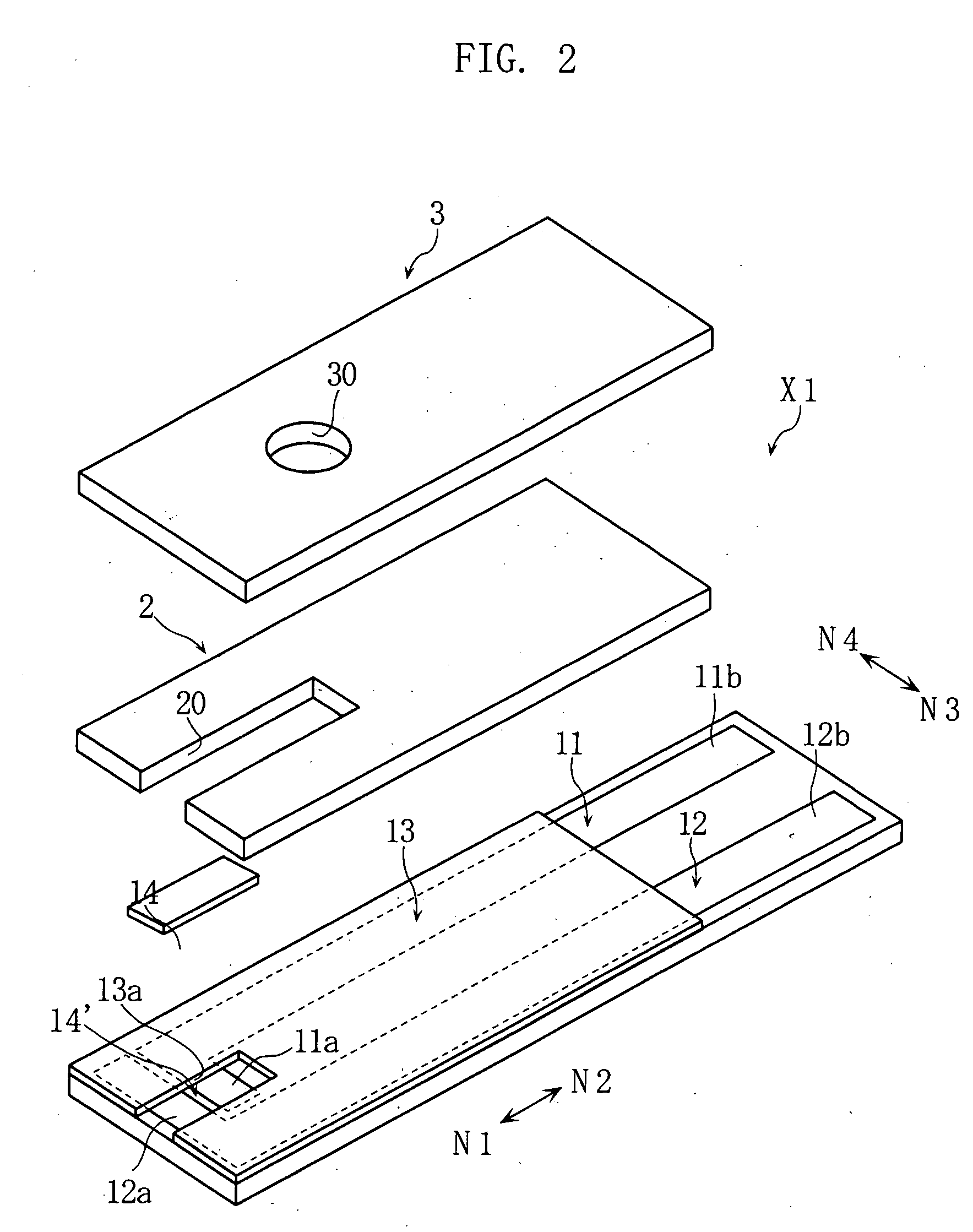Protein-Immobilized membrane, method for immobilization of protein, enzyme-immobilized electrode, and biosensor
a technology of immobilization membrane and protein, which is applied in the field of protein immobilization membrane, enzyme-immobilization electrode, and biosensor, can solve the problems of low efficiency of oxidoreductase (active site), failure to immobilize in a manner, and inability to perform immobilization, so as to achieve efficient and advantageous activity, good orientation
- Summary
- Abstract
- Description
- Claims
- Application Information
AI Technical Summary
Benefits of technology
Problems solved by technology
Method used
Image
Examples
example 1
[0087]In this example, a carbon electrode, a phospholipid polymer layer and a CyGDH layer were formed on a surface of a PET substrate. The conditions of the surface before and after the formation of these layers were observed using an atomic force microscope (AFM) (Tradename “D-3100” available from Digital Instruments).
(Observation of the Carbon Electrode Surface)
[0088]The carbon electrode was formed by screen printing using a carbon ink available from Acheson Japan Ltd. The AFM image of the carbon electrode is shown in FIG. 6. As will be understood from FIG. 6, the surface of the carbon electrode had relatively large irregularities, with carbon particles (having average particle size of about 100 nm) appearing on the surface.
(Observation of the Phospholipid Polymer Layer Surface)
[0089]To form the phospholipid polymer layer, the surface of the carbon electrode was first subjected to VUV treatment (hydrophilic treatment). Then, MPC polymer solution was applied to the surface of the c...
example 2
[0093]In this example, responsiveness was examined with respect to an electrode (inventive electrode) to which CyGDH is immobilized via a phospholipid polymer layer and to an electrode (comparative electrode) to which CyGDH is immobilized without the intervention of a phospholipid polymer layer.
[0094]The inventive electrode was prepared by forming a phospholipid polymer layer on a carbon electrode and then immobilizing CyGDH, similarly to Example 1.
[0095]The comparative electrode was prepared similarly to the inventive electrode except that a phospholipid polymer layer was not formed.
[0096]The responsiveness of the inventive electrode and the comparative electrode was evaluated as the responsive current obtained when a voltage was applied to a glucose solution using a current measuring apparatus Y prepared as shown in FIG. 9.
[0097]The current measuring apparatus Y includes a working electrode Y1, a reference electrode Y2 and a counter electrode Y2, which are connected to a potentios...
PUM
| Property | Measurement | Unit |
|---|---|---|
| molecular weight | aaaaa | aaaaa |
| molecular weight | aaaaa | aaaaa |
| particle size | aaaaa | aaaaa |
Abstract
Description
Claims
Application Information
 Login to View More
Login to View More - R&D
- Intellectual Property
- Life Sciences
- Materials
- Tech Scout
- Unparalleled Data Quality
- Higher Quality Content
- 60% Fewer Hallucinations
Browse by: Latest US Patents, China's latest patents, Technical Efficacy Thesaurus, Application Domain, Technology Topic, Popular Technical Reports.
© 2025 PatSnap. All rights reserved.Legal|Privacy policy|Modern Slavery Act Transparency Statement|Sitemap|About US| Contact US: help@patsnap.com



